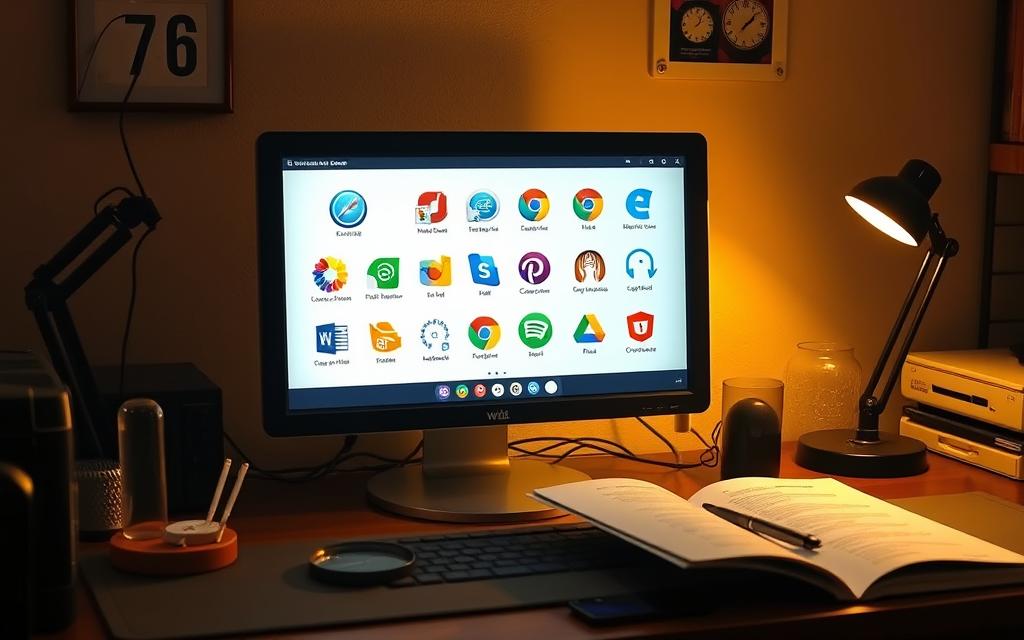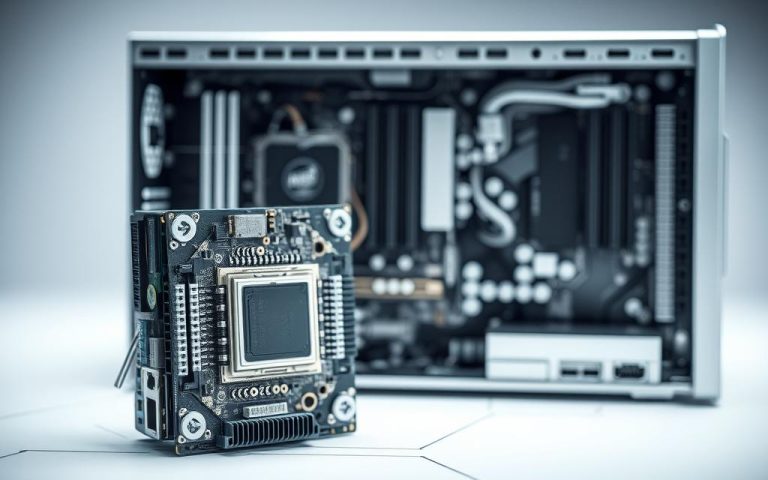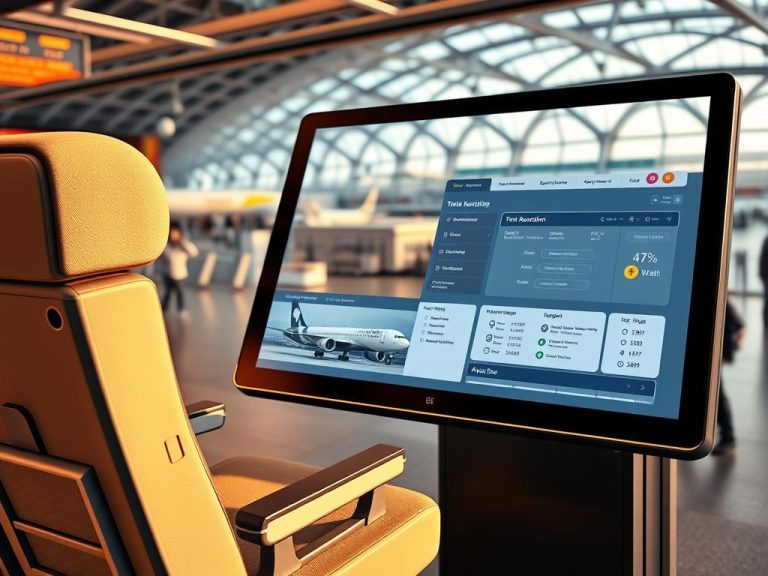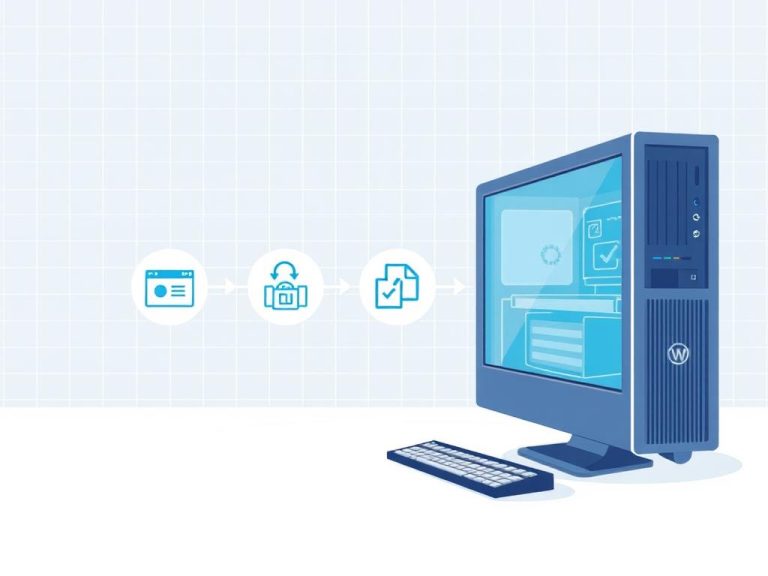How to Check Your Computer’s Operating System
Knowing your computer’s operating system (OS) is key for anyone wanting to make the most of their device. It’s not just a minor detail; it’s critical for fixing problems, meeting system needs, and getting the right help. The OS affects how well your device runs. Knowing which OS you have lets you stay up to date and improve your computing experience.
This guide shows easy ways to find out your OS, whether it’s Windows Vista, Windows 10, or something else. Look for a “Start” button or specific symbols. Or, type “winver” in the search box. This will make finding your OS straightforward.
Understanding Operating Systems
An operating system is crucial software that looks after hardware resources. It also sets the stage for application programs to run smoothly. This operating systems definition shows its role in making hardware and users work together. The main types of operating systems include real-time, multi-user, single-user, mobile, and distributed systems. Each kind serves unique needs and boosts certain features.
Microsoft Windows, macOS, and Linux are among the top operating systems today. Most computers come with Windows already installed. macOS is exclusive to Apple computers. Linux is free to download and is loved for being open-source. It’s very customizable, thanks to its community. These types of operating systems let people choose what best fits their needs. Windows 10 and macOS are prime examples of this.
The functionality of OS covers important jobs like managing processes, memory, and devices. It also includes giving a user interface. For example, Windows has a taskbar at the bottom for quick access to key functions. macOS has a similar setup with its dock. Both systems manage applications well and make using the computer easy. Understanding this helps demystify how operating systems work. It gets users ready for deeper questions about their computer’s OS. For more on operating systems, check out this resource.
Identifying Your Operating System on Windows
Knowing your Windows operating system is key for updates, software fits, and security. There are different ways to find out, especially if you have Windows 10 or the newer Windows 11. Let’s see how you can figure out your Windows OS.
Accessing Settings for Windows 10 and 11
If you’re using Windows 10 or 11, checking your OS is quick via settings. Just do this:
- Click on the Start button at the bottom left of your screen.
- Select Settings to open the settings window.
- Go to System and click on About.
In the About area, you’ll find important info like your Windows edition and version. This helps with checking whether you have Windows 10 OS or Windows 11 OS.
Using the Start Menu for Older Windows Versions
For those on older Windows, like Windows 7 and XP, use the Start Menu to find your OS. Do the following:
- Right-click on the Start button.
- Choose Properties from the menu.
- Search for the System tab or the System Information window.
This will show your system’s details, like name and version, making it easier to identify your Windows OS. Switching from old to new Windows versions can affect what software you can use and how it performs.
How to Know the Operating System of My Computer
Knowing your operating system’s specifics helps optimise your computer’s performance. It makes it easier to use various software. We’ll show you how to find your computer’s specs. This includes knowing if your system is 32-bit or 64-bit.
Checking Device Specifications
To find out your computer’s specs, go to the `System > About` section in Windows settings. You’ll find details about the OS version, processor type, and RAM. Here’s a list of common OS specifications:
| Operating System | Version Example | Processor Architecture |
|---|---|---|
| Windows | Windows 10 Home Version 1607 | 64-bit |
| Windows | Windows 7 Professional | 64-bit |
| macOS | macOS Monterey | 64-bit |
| Linux | Ubuntu 22.04 LTS | 64-bit |
| Chrome OS | Chrome OS 96 | 64-bit |
Determining 32-bit or 64-bit Versions
Finding out if your system uses a 32-bit or 64-bit OS is crucial. It affects software compatibility. On Windows, look under `System > About` and check “System type”. A 64-bit OS can use more memory, improving app performance. macOS mostly runs 64-bit. Linux users can check their version with `uname -m` in the terminal.
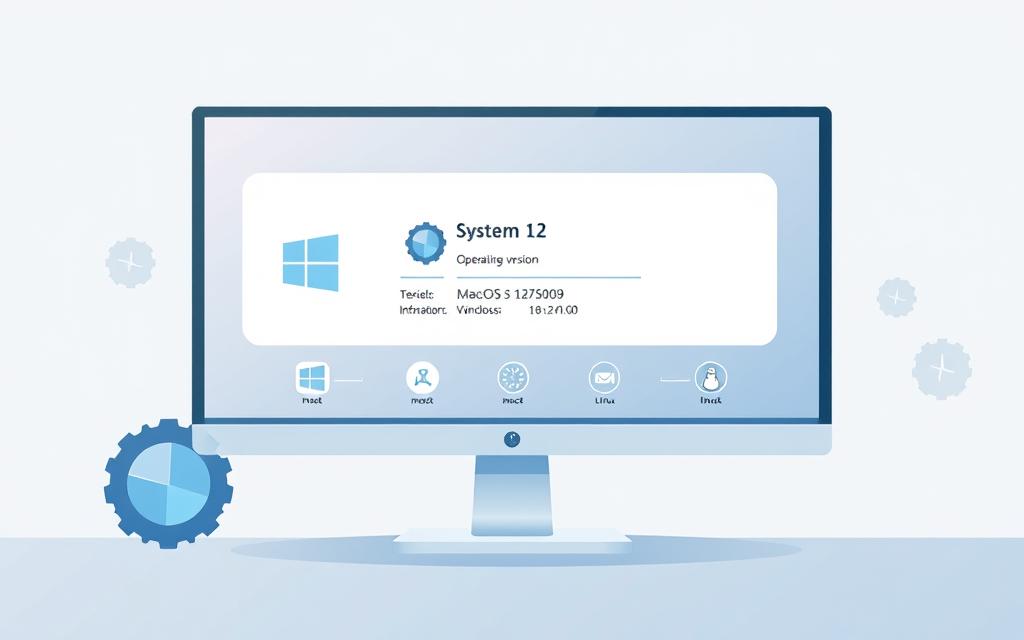
Finding Your Mac Operating System
To check your Mac operating system, knowing how to find the info is crucial. It’s easy and provides essential details about the macOS you’re using.
Steps to Access About This Mac
First, click on the Apple icon at the top-left corner of your screen. This action opens a dropdown menu. Within this menu, choose About This Mac. You’ll then see a window that offers a summary of your Mac system. It includes important info about your operating system and version.
This summary shows your macOS name and its version number. You can also see other details like the build version and hardware specs. These pieces of information are helpful to identify your macOS version. They make sure the software you install works well with your system.
Checking Operating Systems on Mobile Devices
Knowing your mobile’s operating system is key for fixing problems and app compatibility. To find the OS on mobile devices easily, just follow the steps we give next. These are for both iOS and Android systems.
Locating Information on iOS and Android
If you have an iOS device, checking your iOS version is easy. Just go to Settings > General > About to see your version details. Here, you’ll get info on the software version and possible updates.
Android phone users have a simple way to check their Android OS version too. Just visit Settings > About phone > Android version on your device. It lets users confirm their OS version and see more software info.
Being up-to-date with your mobile operating system leads to better device management. It helps in fixing problems quickly and ensuring apps are on the latest version.
Conclusion
Knowing your operating system (OS) is vital. It affects software installs, security updates, and help from tech support. This summary shows how knowing your OS helps you with different tasks. It makes sure apps and hardware updates work right.
We’ve talked about how to check your OS on computers and phones. For example, Windows users can use “systeminfo” and “ver”. Linux users might use “lsb_release” and “cat /etc/os-release” for Ubuntu and CentOS. Keeping up with your OS version boosts performance and security. It makes using your computer better.
Understanding your OS is really important. It lets you choose software wisely and connect better with your devices. For more help and tips on picking the right OS for you, click this resource. It has lots of useful advice.
FAQ
How can I determine the operating system of my computer?
To find out what operating system your computer has, look in the settings. If you have Windows 10 or 11, go to Start > Settings > System > About. For older Windows, right-click ‘Start’, choose ‘Properties’, and then look under ‘My Computer’. Mac users should click the Apple icon and pick ‘About This Mac’.
What are the different types of operating systems?
There are many types of operating systems. They include real-time systems, multi-user systems, and single-user systems. There are also mobile operating systems and distributed systems. Each kind serves different purposes.
How can I check my Windows operating system version?
To find out your Windows version, go to Start > Settings > System > About if you have Windows 10 or 11. For older versions, right-click the Start button, pick ‘Properties’, and see the OS name and version.
What is the significance of knowing if I have a 32-bit or 64-bit operating system?
Knowing if your system is 32-bit or 64-bit is key for using software. Some programs need a specific OS bit version. Look under ‘System type’ in Windows settings to find this info.
How do I find my macOS version?
To see your macOS version, click the Apple icon and choose ‘About This Mac’. You’ll see the macOS name and version number there.
What steps should I follow to check the OS on my mobile device?
For iOS, head to Settings > General > About. Android users, go to Settings > About phone > Android version. This helps with app compatibility and updates.
Why is it important to keep my operating system updated?
Updating your operating system boosts security and performance. It also makes sure new software works well. Regular updates can prevent problems and keep your device in good shape.
